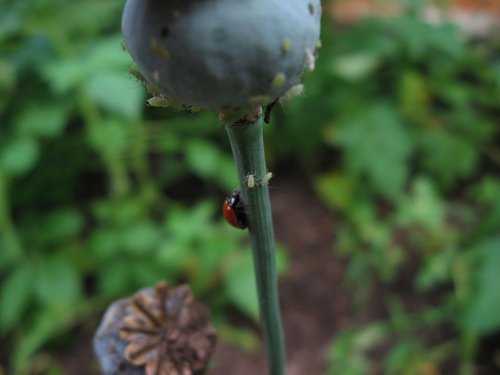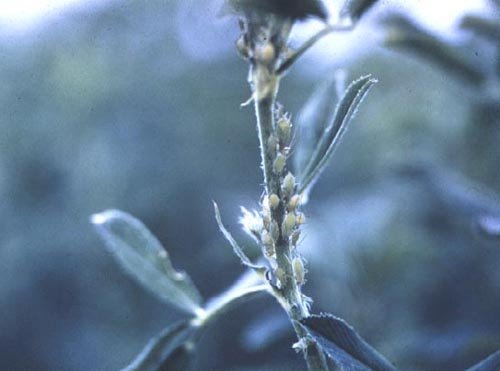


Pea Aphid, Macrosiphum pisi (Harr.)
PLANTS ATTACKED: Alfalfa, clovers, vetch, field and garden peas.
DESCRIPTION: This aphid is pea-green and about 1/6 inch long. Adults may be winged or wingless, but all the young (nymphs) are wingless. Cast-off white skins shed by nymphs are quite noticeable on aphid-infested plants and nearby on the ground.
LIFE HISTORY: The pea aphid spends the winter in the South as an adult in the crowns of the host plant but during mild winters may continue to reproduce intermittently throughout the year. Only the female occurs, and it gives birth to 50 to 100 living young. A generation may develop in about 10 days and, there may be 20 generations annually. Winged forms usually predominate when overcrowding of the aphids appear or when a shortage of food occurs. They migrate by flight aided by high winds. Infestations are greatest in cool weather during the spring and early summer.
DAMAGE: Plants severely infested are stunted and may even die. Generally the aphids damage the tops of plants first and progress downward as the infestation increases. In addition to sucking the juices from the plant, the aphids also produce a sugary, sticky material called "honeydew," which is visible on plants that have moderate to severe infestations.
Several other species of aphids attack various forage crops. Their habits, biologies and damages are similar to that previously discussed.